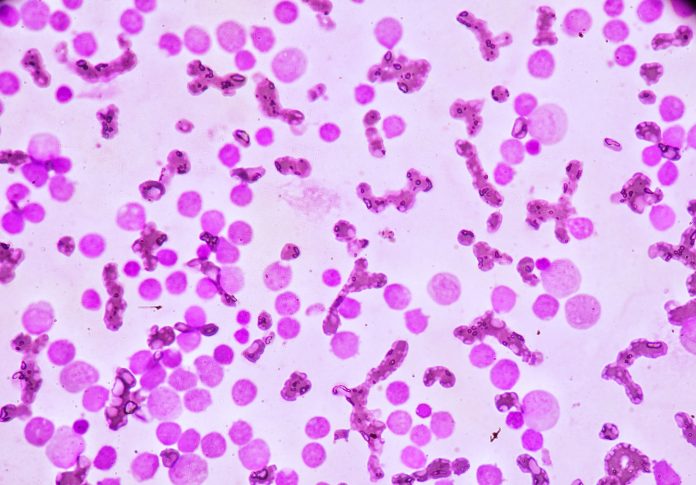Scientists have identified two drugs that are effective in acute myeloid leukemia (AML) treatment when combined
Researchers from Sanford Burnham Prebys Medical Discovery Institute and the University of Glasgow were able to significantly enhance cancer cell death in cases of acute myeloid leukemia (AML) by administering both MDM2 inhibitors and BET inhibitors.
There are many types of AML and different cases have different chromosome changes, gene mutations and epigenetic modifications, making it difficult for researchers to find an effective treatment for the majority of patients.
Although progress has been made toward finding effective treatments in recent years, the five-year survival rate for adults with AML remains less than 30%, according to the American Cancer Society.
Notably, TP53, the most frequently mutated gene in all human cancers, is found unaltered in about 90% of AML patients. Since the product of the TP53 gene, p53, acts to suppress tumours, scientists have sought drugs that boost its anti-cancer powers in AML.
Peter Adams, Ph.D., a professor at Sanford Burnham Prebys and senior author of the study, says:
“Our study shows that two types of drugs, MDM2 inhibitors and BET inhibitors, work synergistically to promote significant anti-leukaemia activity. The results were surprising because previous research had shown that each drug on its own had modest benefit against AML. The new research provides scientific rationale to advance clinical studies of the drug combination in patients with AML.
“We were interested in combining MDM2 and BET inhibitors because each showed encouraging pre-clinical activity, but limited activity when given to patients as a single agent. Previous research had shown that MDM2 inhibitors activate p53, and BET inhibitors suppress genes associated with leukemias–but not p53.
“Our research unexpectedly showed that like MDM2 inhibitors, BET inhibitors activate p53, but through a different pathway. BET inhibitors mute the power of a protein called BRD4, which we found is a p53 suppressor in AML. Between the two drugs, you end up with a ‘double whammy’ effect that fully unleashes the anti-cancer activity of p53.
“Better therapies for AML are desperately needed. This study illustrates that targeting BRD4 as part of a combination therapy holds promise for patients diagnosed with this very dangerous disease.”
The study was published in the journal Nature Communications.











